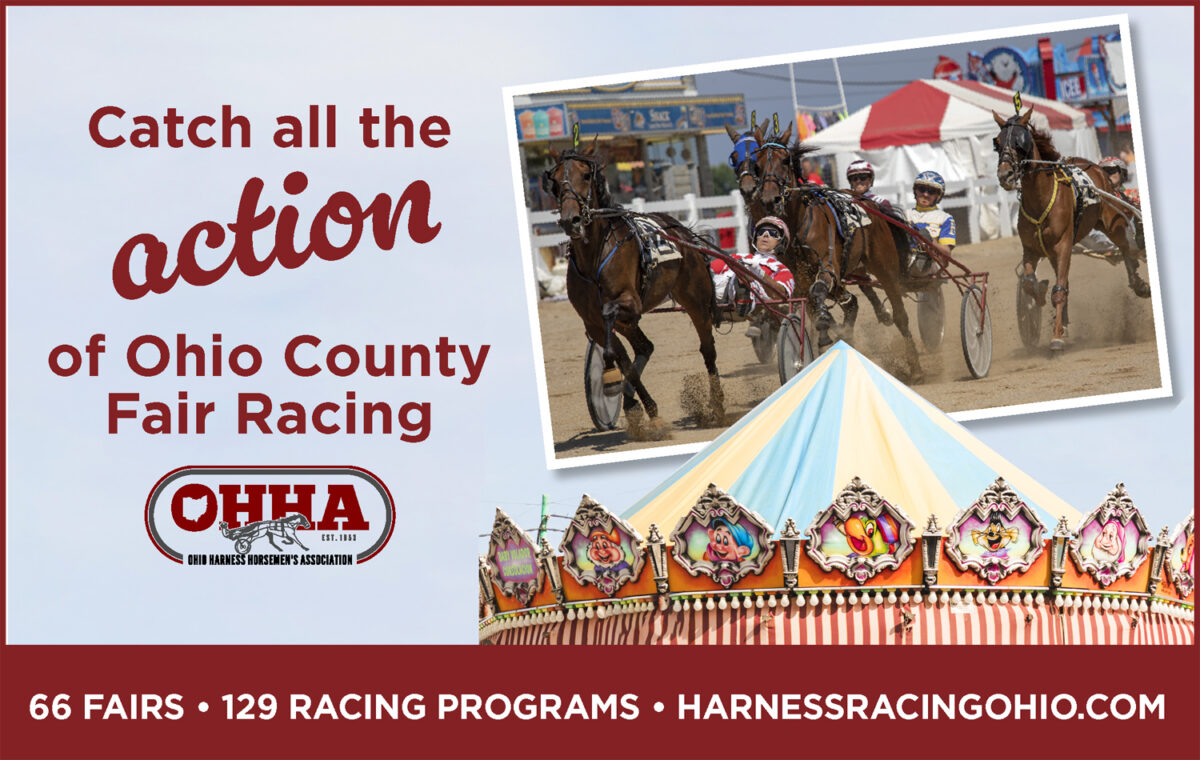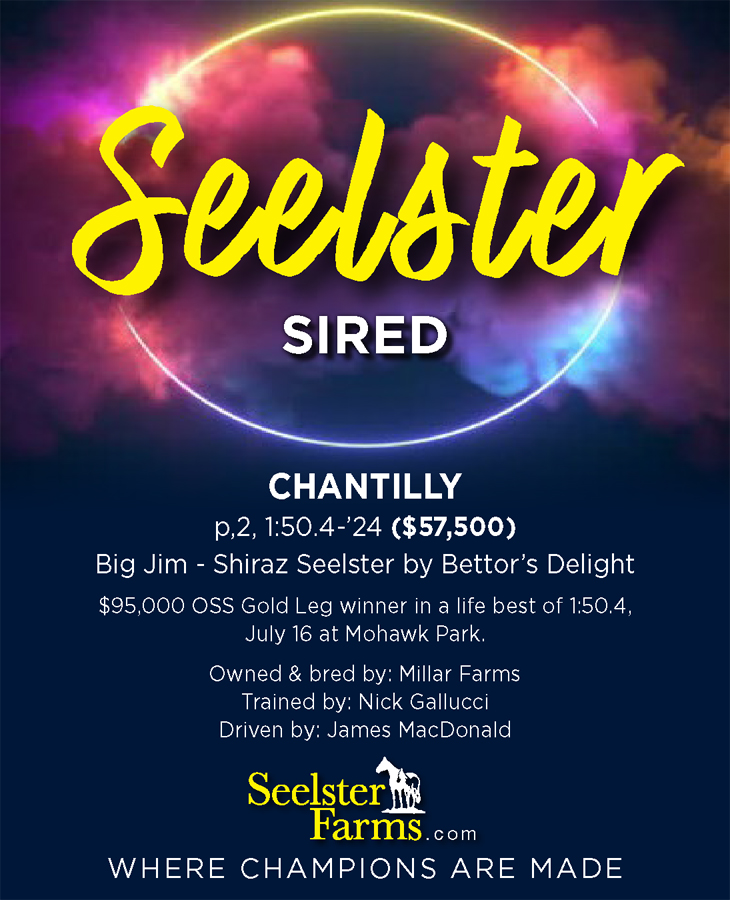

With pro drivers required to commit to The Big M, is carding four amateur races beyond the pale?
The pros and cons of the GSY.
by Debbie Little
The GSY amateur races have become a regular selection on The Meadowlands’ Friday night menu.
Although not everyone’s cup of tea, the races have been consumed in a big way at the windows.
But a week ago Tuesday, when the Friday (March 25) draw showed four GSY races, a discussion started on Twitter.
The original post basically questioned why the track would mandate the best drivers in the world to compete in March only to have four races given away to a bunch of amateurs.
It’s unclear if it’s the amateurs, the mandate or the combination of the two that is unappealing to the author of the tweet, but the majority of the replies were focused on the GSY. One said these races are a black eye to a prestigious track, another refuses to bet amateurs and thinks they belong at a fair track, while another likened them to the New York Knicks taking people out of the stands to play for a quarter.
When asked to explain the point of these races, the author of the original tweet wrote “They always have full fields and people bet them hard. Pretty much that’s it.”
Since having full fields and being well bet can in no way, shape, or form be considered to be a negative, maybe a lot of it is about the “A” word.
“Amateur” can have a stigma connected to it since most consider the definition to be incompetent or inept, rather than someone being unpaid.
GSY member Tony Verruso, the 2021 Amateur Driver of the Year, tries to take the tweets in stride.
“Of course it bothers you when somebody makes an off comment about what you do, but I don’t take it to heart,” said Verruso. “If you don’t like it, don’t bet it. What’s the big deal? Obviously, other people do because it’s getting bet.
“Somebody said to me ‘How can you be an amateur, you’ve won so many races?’ I said, amateur doesn’t mean novice. There’s a difference. Most of us have been racing for 20 years.”
Perhaps it’s as simple as the number of amateur races is too many for some.
“Four races is a lot of races, but they’ve also done this all winter long, so this is nothing new,” said pro driver Scott Zeron. “I honestly think it’s a great outlet and I hope more people get interested in it. It’s super fun and it gets those guys to buy horses, too.”
In September, November and December of 2021, the GSY averaged slightly over three races per card on the 12 nights that they competed.
In January and February of 2022, they only had two races per night, but since the beginning of March, they’ve been at three until last week, when they went to four.
“If I had 300 [entries] in the box for a double draw, I wouldn’t have to be going three or four divisions of amateurs,” said Meadowlands’ race secretary Scott Warren. “And the GSY has been there through thick and thin. There’ve been 16 different drivers win in the GSY this year so far and they bring people to the track when they’re racing.
“It’d be different if we were putting them on the track and they weren’t betting any money, but they are betting money on those races.”
This week, Warren had 256 in the box, up 30 over the corresponding weekend from last year and five more than last week. But with Harrah’s Philadelphia opening on April 3, it’s only going to get harder to fill races.
One of the things that make the GSY races attractive to bettors is full fields. Warren has acknowledged that the track handles more on a full field of bottom level horses than on a short field of good ones.
“The one week that we had [GSY] races one, three and five was the night that gave us the Pick-5 carryover for the Saturday night because they were part of the longshots,” said Warren.
GSY’s Cote Keim won at 60-1 and was a major factor in the only Pick-5 carryover of the year, a pool that swelled to well over $300,000 the following night.
The Friday night that Warren referred to was on March 11, where the three GSY 10-horse fields saw $737,604 bet, good for an average of more than $245,000 per race. To put that into some perspective, when the average per race is $245,000 for a 13-race card, the total handle is $3.1 million.
Some also think that trying to pick the winner of a GSY race is simply blind luck, but when you consider the favorite wins a third of the time, it’s not like you’re randomly throwing darts at a board.
In contrast, the favorite overall at The Meadowlands wins 40 per cent of the time, a number that would certainly be higher if the GSY were not part of it.
It was alluded to on Twitter that one of the reasons that the GSY gets full fields is that their purses are much higher.
The purses on the GSY races are somewhat higher than they would be if those same horses were racing for the pros, but that’s not why those races fill.
What is apparently lost on many is that most of the horses entered in these races are owned, trained or both, by amateur drivers.
When Dave Yarock founded the GSY, he wanted the club to be different and didn’t want them to just be an amateur field of catch drivers.
“One of the reasons I started the club was to get people to put skin in the game, to get new people to invest in horses,” said Yarock. “And I’ve always had as one of our conditions, an owner/driver preference.”
It’s also been suggested that if the amateurs weren’t around, that their four fields would just switch over to the pros, but that is incorrect.
In fact, Warren has made it clear on more than one occasion that without the amateurs, he might get one additional race for the pros, but it would be a struggle to fill the rest of the card.
“If there weren’t any amateur clubs, I wouldn’t own four race horses,” said Verruso. “So, if you don’t think that helps the game somehow, then you’re not paying attention.”
Yarock agrees with Verruso.
“If it wasn’t for the amateurs, I wouldn’t be in the business,” said Yarock. “I would not have other horses. I would not own a farm. A lot of the guys that come for the amateurs bring horses for the overnights, so we’re adding into the other pool as well.
“We do a good job. We fill our races. We have good competitive races. We have a good handle and we bring a lot to the industry. We’re one of the biggest growth areas of the sport.”
Professional owner, trainer and driver Stacy Chiodo understands what it’s like to kill time in the drivers’ room while the GSY is on the track, but her perspective is unique since her husband, Bruno, competes in the GSY at The Meadowlands.
“I do see both sides and it comes down to drivers starts for the pros and it comes down to handle for the racetrack,” said Chiodo.
One of Chiodo’s partners has been talking to her lately about getting a license to drive with the amateurs.
“Back in the day at Garden State Park, he got to do something in a [double-seated] cart,” said Chiodo. “And he said it was the most amazing thing he ever did and that was the thing that got him to want to buy a standardbred.”
Meadowlands’ chief operating officer/general manager Jason Settlemoir thinks the GSY style of driving brings back a piece of The Meadowlands past.
“The amateur races look similar to The Meadowlands races in the 1970s and 80s with contentious early fractions that led to more horses being able to close from the back and have a chance to win,” said Settlemoir. “I understand the drivers’ point of view, obviously, but at the end of the day we need the trainers and owners to support the box here at The Meadowlands to be able to put on all the races that we do.
“Just like everything else, we get positive and negative [feedback about the GSY], but I would say it’s more positive than negative at this point.”
Ultimately, all the back and forth on Twitter boils down to this: Do the pros want to sit out for four races? No. Is GSY to blame? Also, No.
“Bottom line is, the track is looking out for the best product and their handle and if that’s what they need to do by including the amateurs in the early double and in the early races on the card to get the handle then that’s what they’re going to do,” said Chiodo. “And if that fails, nobody has a job. So, to me, suck it up. If you’ve got to be there until 11, 11:30 at night, that’s what you decided to do for a living. We don’t work 9 to 5. I’m sorry. That’s part of the lifestyle that all of us chose because of the passion that we have for this business.
“Everybody wants to bitch about the post drags. I can’t stand them. It makes us get home an hour later, but if that brings in more money to the racetrack, so be it. It’s going to keep me employed for years to come.”















